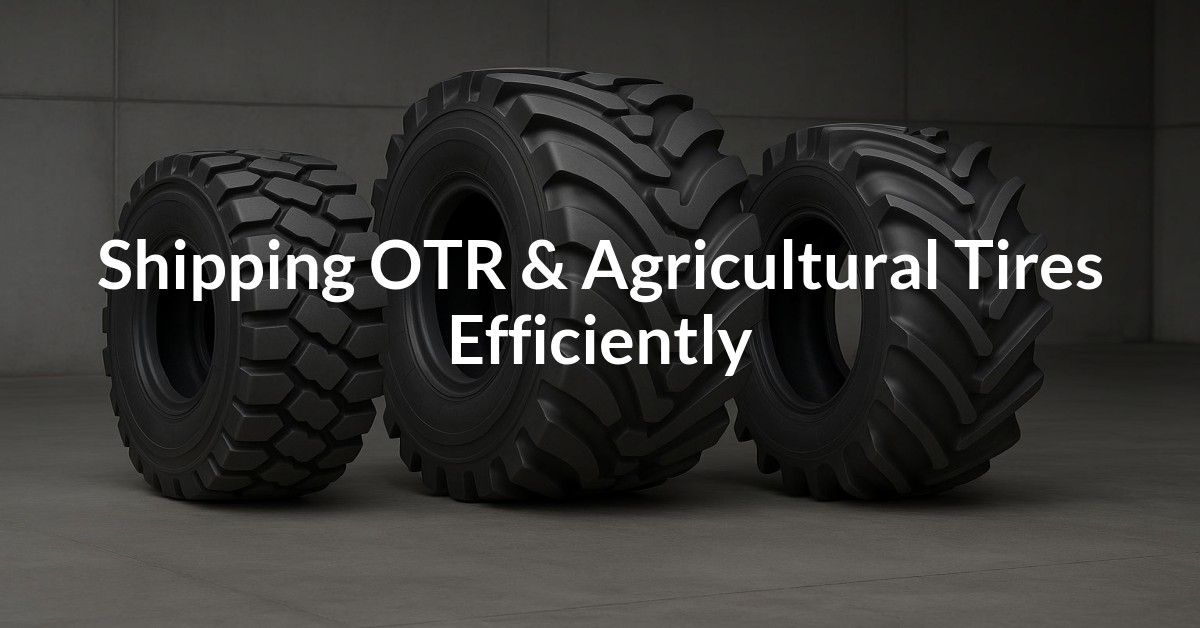Off-the-Road (OTR) and agricultural tires play a critical role in various industries, from construction to farming. Shipping these massive and heavy-duty tires requires a systematic approach to ensure they reach their destination safely and efficiently. This guide delves into the best practices for packaging, crating, and shipping OTR and agricultural tires within the United States and Canada.
Understanding OTR & Agricultural Tires
OTR and agricultural tires are specifically designed to handle challenging terrains and heavy loads. Their robust construction makes them essential for machinery used in mining, construction, and farming. Depending on their size and weight, these tires require special considerations during shipping to avoid damage.
Dimensions and Weight Considerations
OTR and agricultural tires come in various sizes, with diameters ranging from 3 to over 13 feet and weights that can exceed 5,000 pounds. It's crucial to accurately measure and weigh these tires to select the appropriate shipping method and equipment.
Packaging and Crating Best Practices
- Select durable crating materials to protect tires from external pressures.
- Use reinforced pallets to stabilize tires during transit.
- Ensure secure strapping and utilize protective coverings to prevent surface damage.
- Label the crates with handling instructions and weight details.
Choosing the Right Freight Service
Depending on the shipment size, businesses can choose from various freight services. For massive shipments, Full Truckload (FTL) options like flatbed, step deck, or heavy/over-dimensional are ideal. Less Than Truckload (LTL) services suit smaller consignments or when shipping multiple smaller tires. Shared or Partial Truckload services provide an efficient middle ground for medium-sized shipments.
Loading and Unloading Procedures
Proper loading and unloading protocols are vital to prevent damage and ensure safety. Utilize forklifts and cranes for heavy tires, ensuring that all safety guidelines are met. Secure crated tires firmly within the transportation vehicle using tie-downs and padding.
Role of the Bill of Lading (BOL)
A Bill of Lading (BOL) is an essential legal document in all freight shipping operations. It serves as a receipt and a transportation contract, outlining crucial shipment details such as the types of goods, their weight, and receiving instructions. Accurately filling out the BOL mitigates the risks of misunderstandings and legal issues. You can create a valid document using our Bill of Lading Generator.
Cost-Saving Strategies and Best Practices
- Consolidate multiple shipments to capitalize on lower bulk rates.
- Regularly review shipping routes to find the most economical options.
- Maintain clear and open communication with your freight provider to avoid additional charges due to delays or miscommunications.
- Opt for shared truckload services when full loads are unnecessary.
Get Personalized Assistance for Shipping OTR (Off-the-Road) & Agricultural Tires
Partnering with Freight Sidekick ensures your tire shipments are handled professionally and efficiently. Get a quote today, call us at 877-345-3838 or email support@freightsidekick.com.











